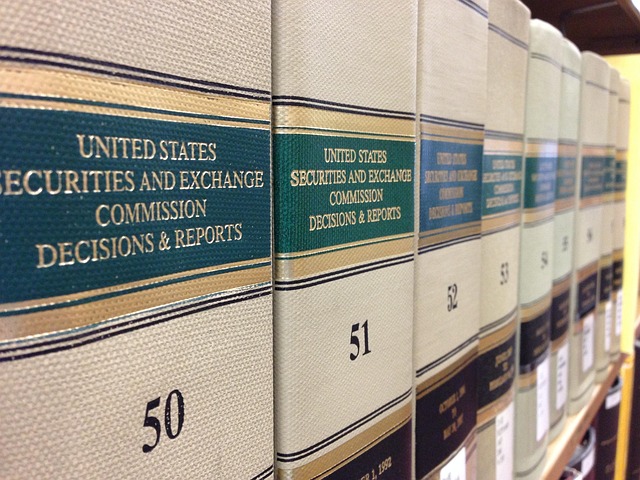Regulatory compliance involves navigating intricate legal standards to avoid penalties and preserve integrity. The Legal Standards for Burden of Proof vary globally, from civil to criminal cases, dictating the responsibility for proof between businesses and regulatory agencies. Businesses must implement robust internal controls, stay informed, and provide compelling evidence of adherence to protect themselves from unfounded claims and severe consequences like fines, license revocations, and bankruptcy.
Regulatory compliance is a cornerstone of any successful business, yet it’s often misunderstood. This article delves into the intricate world of regulatory compliance issues, guiding you through essential components like understanding specific requirements, navigating legal standards for burden of proof, and recognizing the pivotal role of proof in ensuring adherence to industry regulations. We also explore strategies to meet these obligations and highlight potential consequences of non-compliance, emphasizing the importance of meticulous attention to detail.
- Understanding Regulatory Compliance Requirements
- Defining Legal Standards for Proof
- The Role of Burden of Proof in Compliance
- Strategies to Meet Industry Regulations
- Potential Consequences of Non-Compliance
Understanding Regulatory Compliance Requirements

Regulatory compliance is a complex web that every business must navigate to avoid legal pitfalls and maintain its integrity. Understanding the vast array of rules and regulations specific to your industry is paramount, as non-compliance can lead to severe consequences, including hefty fines, license revocations, and even criminal charges. The onus of ensuring adherence often lies with businesses themselves, who must employ robust internal controls and dedicate resources to stay apprised of changing legal standards.
In many cases, the burden of proof during regulatory investigations or prosecutions rests heavily on the shoulders of enforcing agencies. However, for companies facing white-collar defense issues, such as those stemming from fraud or antitrust violations, the stakes can be high. Jury trials in these scenarios demand meticulous documentation and a strong argument that all applicable legal standards have been met, aiming for a complete dismissal of all charges.
Defining Legal Standards for Proof

Defining legal standards for proof is a crucial aspect of ensuring regulatory compliance. In many jurisdictions, the burden of proof lies with the entity subject to regulation, meaning they must present compelling evidence to demonstrate adherence to laws and guidelines. This standard varies across different legal systems but generally requires a high degree of certainty and reliability in documentation. For instance, in civil cases, the balance of probabilities is often the benchmark, while criminal matters typically demand beyond a reasonable doubt.
The process involves striking a delicate balance between facilitating efficient regulatory oversight and protecting entities from undue burden. Achieving extraordinary results in proof standards can be a double-edged sword; while stringent requirements may enhance accountability, they could also inadvertently hinder compliance, especially for smaller businesses or those operating in complex sectors. Thus, a nuanced approach is essential, one that considers the nature of the industry, the potential impact on participants, and the broader goals of regulatory bodies, including the philanthropic and political communities, to avoid unwarranted indictment.
The Role of Burden of Proof in Compliance

In regulatory compliance matters, the concept of burden of proof plays a pivotal role in determining the outcome of investigations and subsequent legal proceedings. The Legal Standards for Burden of Proof dictate that the onus is on the regulatory authority to establish guilt beyond a reasonable doubt. This principle ensures fairness and protects both corporate and individual clients from unfounded accusations. Throughout all stages of the investigative and enforcement process, the burden remains with the regulator to present compelling evidence, leaving the accused with the right to defend themselves.
A key aspect of this dynamic is that it empowers individuals and businesses to challenge regulatory actions if they believe the proof presented is inadequate. This not only ensures transparency but also acts as a safeguard against arbitrary decisions. Ultimately, the goal is to achieve a complete dismissal of all charges if the burden of proof is not met, thereby upholding the integrity of the legal system.
Strategies to Meet Industry Regulations

Staying ahead of industry regulations is a strategic necessity for businesses to avoid legal pitfalls and maintain their reputation. One of the key aspects in meeting these standards is understanding the burden of proof. Companies must gather substantial, relevant evidence to support their claims, ensuring it aligns with the legal standards set by regulatory bodies across the country. This often involves meticulous documentation, data analysis, and expert witness testimony.
By implementing robust internal processes and staying informed about evolving legal requirements, businesses can proactively navigate complex regulatory landscapes. For his clients, this means delivering winning challenging defense verdicts, demonstrating a commitment to both regulatory compliance and exceptional legal representation.
Potential Consequences of Non-Compliance

The potential consequences of non-compliance with regulatory standards can be severe for any respective business, especially when it comes to white collar and economic crimes. The legal standards for burden of proof in such cases are stringent, placing a heavy onus on businesses to ensure adherence to all applicable regulations. Failure to meet these requirements not only invites substantial fines but also damages the reputation of the company, often making it difficult to secure future business opportunities.
Moreover, non-compliance can lead to criminal charges against individuals responsible for ensuring regulatory adherence within the organization. This includes potential prison sentences and civil liabilities that could bankrupt a business. For his clients, maintaining compliance is not just about avoiding legal penalties; it’s about upholding ethical standards and demonstrating a commitment to integrity, which are crucial factors in building and preserving trust with stakeholders.
In navigating complex regulatory landscapes, understanding and adhering to legal standards for burden of proof is paramount. As discussed, these standards play a crucial role in ensuring compliance across various industries. By embracing effective strategies to meet industry regulations and recognizing the potential consequences of non-compliance, businesses can foster a culture of responsible adherence to legal requirements. This not only mitigates risks but also enhances their reputation as trustworthy entities operating within established frameworks.






